Technical Specifications: as listed by XSPC.
- 3mm Thick Aluminium Frame (No aluminium in the flow path)
- Copper and Brass Core
- Matt Black Painted Core
- Black Chrome Plated G1/4″ Ports
- RoHS Compliant
- Dimensions: 150 x 40 x 332mm (WxDxH) (46mm at ports)
- Weight: ~ 1045g
- Screws: 6-32 UNC
- Fans: 2 x 140mm (4x with push/pull)
The following technical drawings of the AX280 are courtesy of XSPC.

Note: The Technical Specifications list the thickness of the AX280 as 40mm, which is correct, BUT note the extra 6mm which the port extenders sit proud of the casing. (as seen in the 2nd technical drawing and photo below). In a cramped installation, 6mm can mean the difference between something fitting or not, so it may pay to think of it as 46mm thick for installation purposes.
Dimensions Measured on the Radiator Tested:
 The 21mm thick core is made up of 2 rows of 13 tubes arranged in the standard U-Flow configuration. The fin arrangement consists of split fins which are very finely louvered and have a 21 FPI count. This thin, medium to high density core is highly unlikely to be a combination capable of outstanding performance but should be best suited for medium to high speed fans.
The 21mm thick core is made up of 2 rows of 13 tubes arranged in the standard U-Flow configuration. The fin arrangement consists of split fins which are very finely louvered and have a 21 FPI count. This thin, medium to high density core is highly unlikely to be a combination capable of outstanding performance but should be best suited for medium to high speed fans.
The following picture is a reference which shows a typical U-Flow coolant flow path, where the coolant travels up all the tubes on one side (left in pic) of the rad and then returns down the other side. U-Flow is most easily recognized when the port end has 2 separate tanks, unlike the AX280 which the tanks fully enclosed in the external casing.
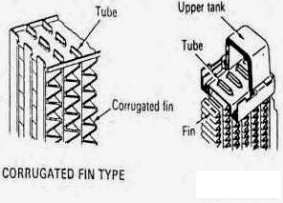
The split, louvered fins are spaced very evenly between the tubes and our sample had the specified fin count of 21 FPI.

Finish and Features
The black painted core of the AX280 is housed in a stylish enclosure made of 3mm thick aluminum. This enclosure is a 3 piece assembly comprising the main section which houses the radiator, along with 2 end plates.
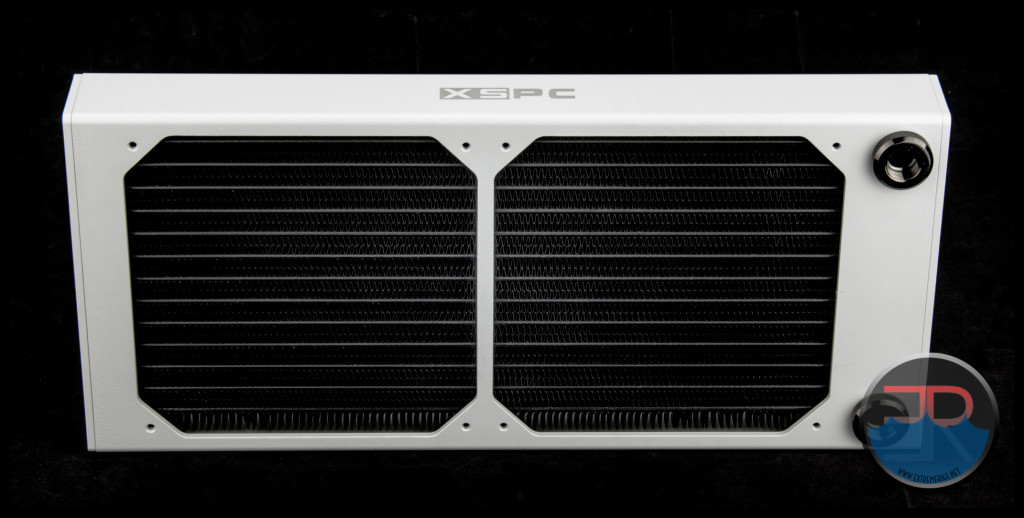
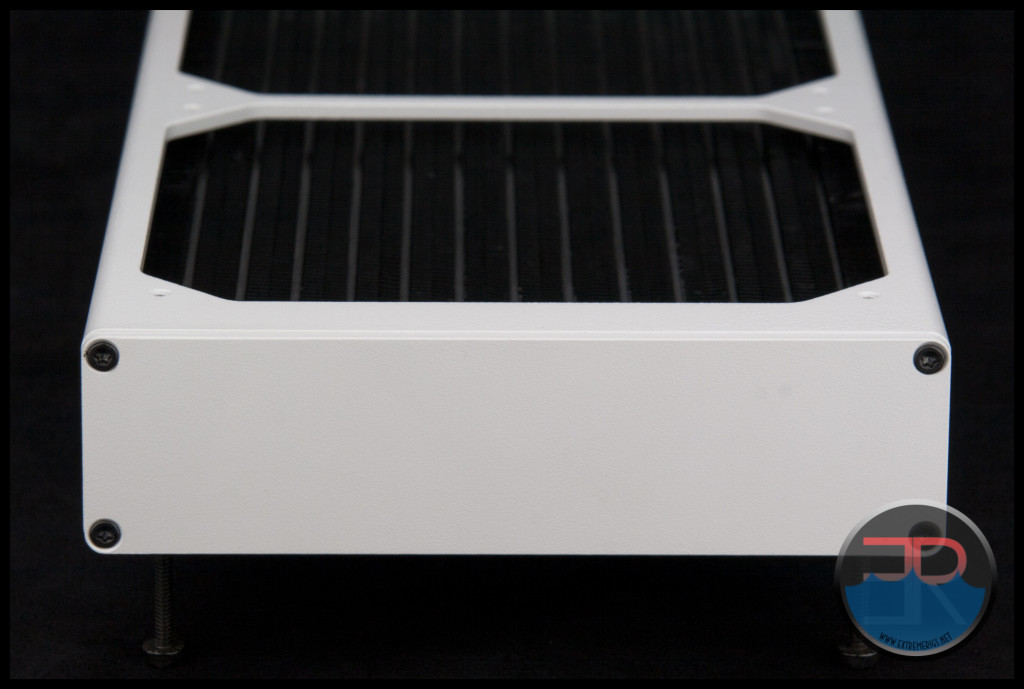
By removing the the 4 torx head (anti-tamper) screws from each end cap we see the radiator is only fixed to the housing by the port extenders. Otherwise the core is “floating” inside the aluminum housing with foam pieces stuck at each end, which along with the port extenders, do keep the radiator firmly in place.
The white finish of the review sample feels very smooth to touch but close inspection shows that despite the smoothness it is actually fairly rough in texture.
The white finish is actually off white in color which was difficult to photograph to best indicate the shade. It is more of warm shade of white than a bright white. In any case the finish looks great and seems tough and durable so that it shouldn’t scuff up or scratch easily.
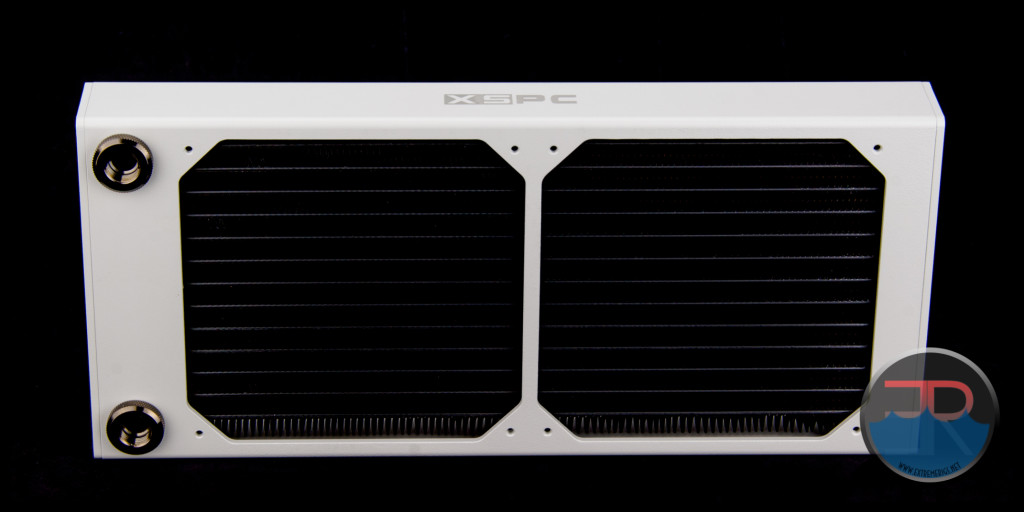
The AX 280 is also available in a Satin black finish. Photo courtesy of XSPC.
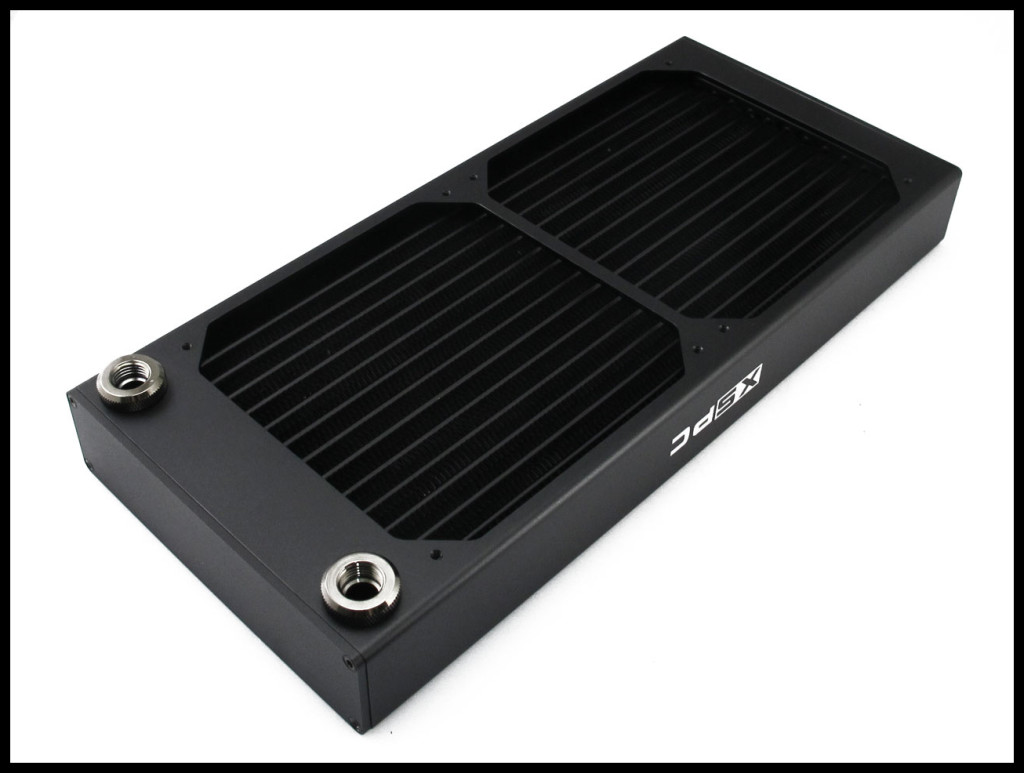
Along each side the the housing there is the XSPC logo which on our white sample was subtly done with silver paint. The black AX280 logo is finished with a white logo which is much less subtle. The logo is applied so that the XSPC logo is facing the correct way for a roof installation, but will be upside-down for a floor mounted installation.
Screw protection plates are not fitted on the AX280.
 While the screw mounting holes are located with the radiator tubes in the firing line, there is about 6mm of space between the inside of the housing and the tubes. This 6mm + 3mm housing + 25mm fan = 34mm, meaning the supplied 30mm screws are perfectly safe to use even with no case panel between with no risk of damaging the core.
While the screw mounting holes are located with the radiator tubes in the firing line, there is about 6mm of space between the inside of the housing and the tubes. This 6mm + 3mm housing + 25mm fan = 34mm, meaning the supplied 30mm screws are perfectly safe to use even with no case panel between with no risk of damaging the core.

The AX280 is equipped with just 2 G 1/4 ports in total, either of which can be used for inlet or outlet. As mentioned previously these ports, or port extenders sit 6mm proud the enclosure.
 No alternative port options are fitted on the AX280.
No alternative port options are fitted on the AX280.
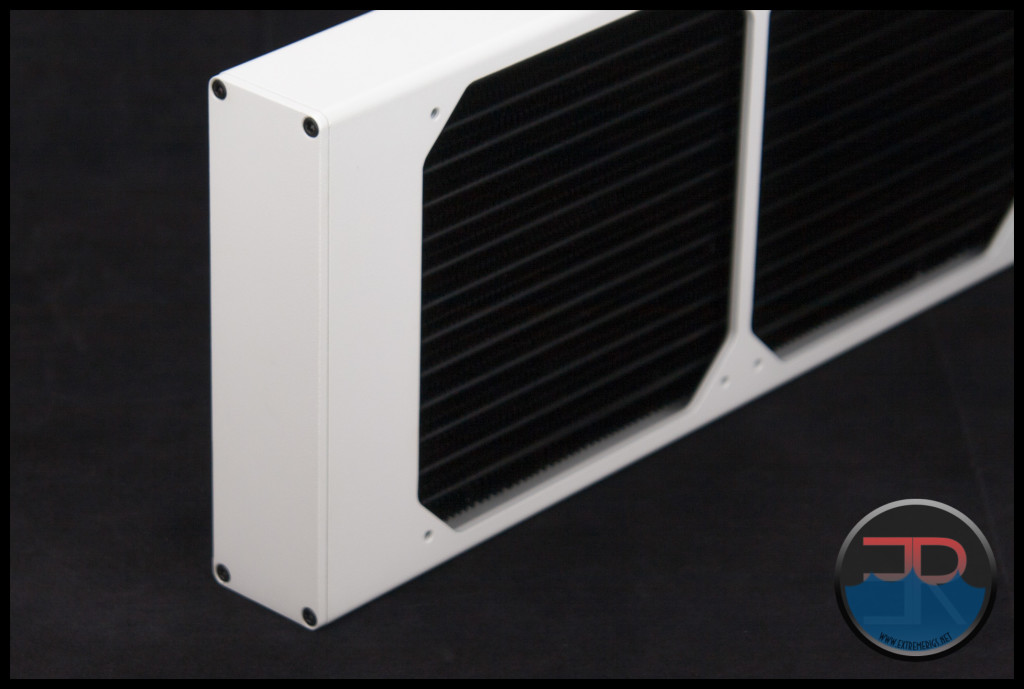
Unfortunately there is no dedicated fill/drain port on the return end either.
Technically the ports are extensions which screw into the radiator through the external casing. While the port extensions’ main purpose is to provide a sealed extension from the radiator to the housing , they also fix the radiator centrally inside the casing.

The extenders are tightly fitted during assembly but they could unscrew when removing fittings. If the extenders do unscrew, a firm hand tightening should be all that is required to tighten them back up.

The port extenders on the AX280 have a black chrome finish which perfectly match XSPC’s range of black chrome fittings.

With chrome or shining silver fittings the black chrome extenders do look a little out of place.
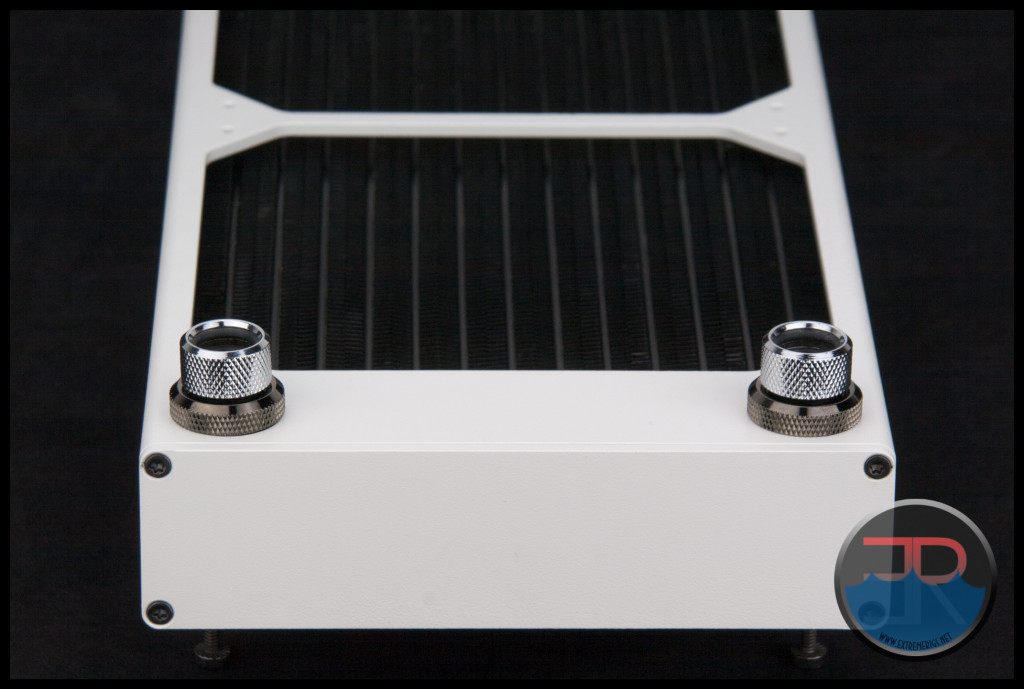
With black fittings the black chrome port extenders don’t seem quite as much of a mis-match.
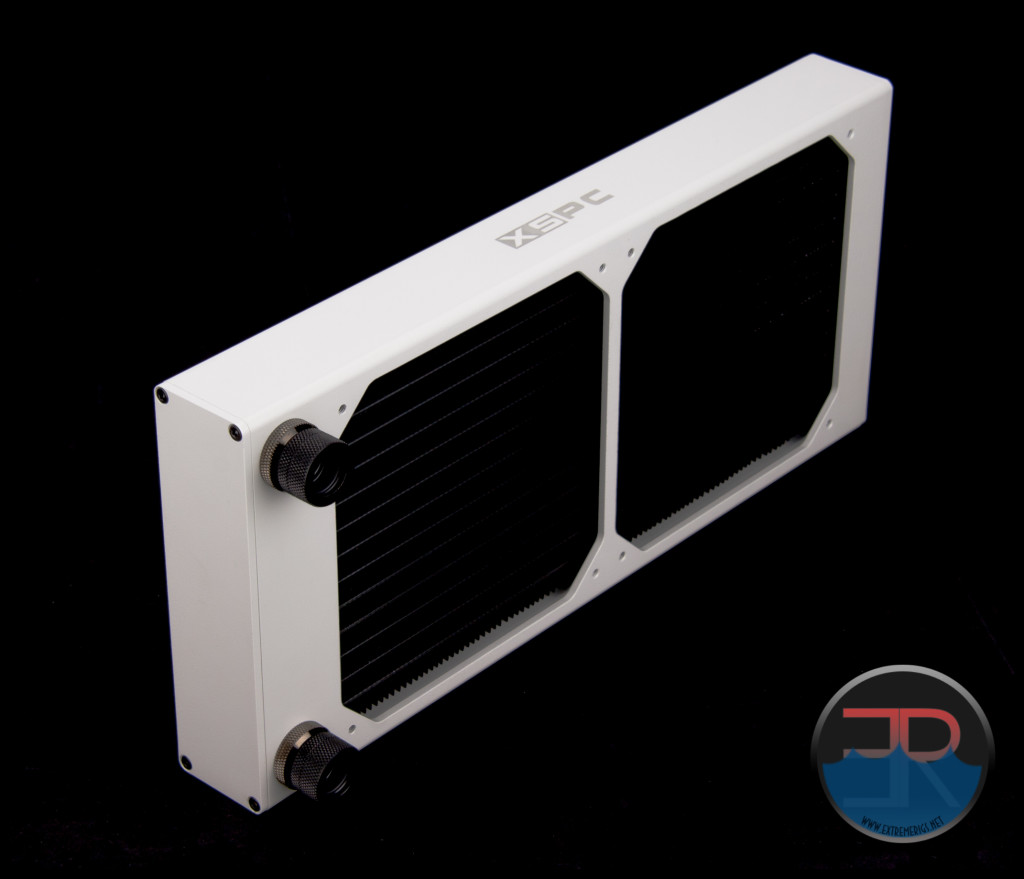
The 15mm fan spacing is perfect and we had no trouble when test fitting a few different sets of 140mm fans.
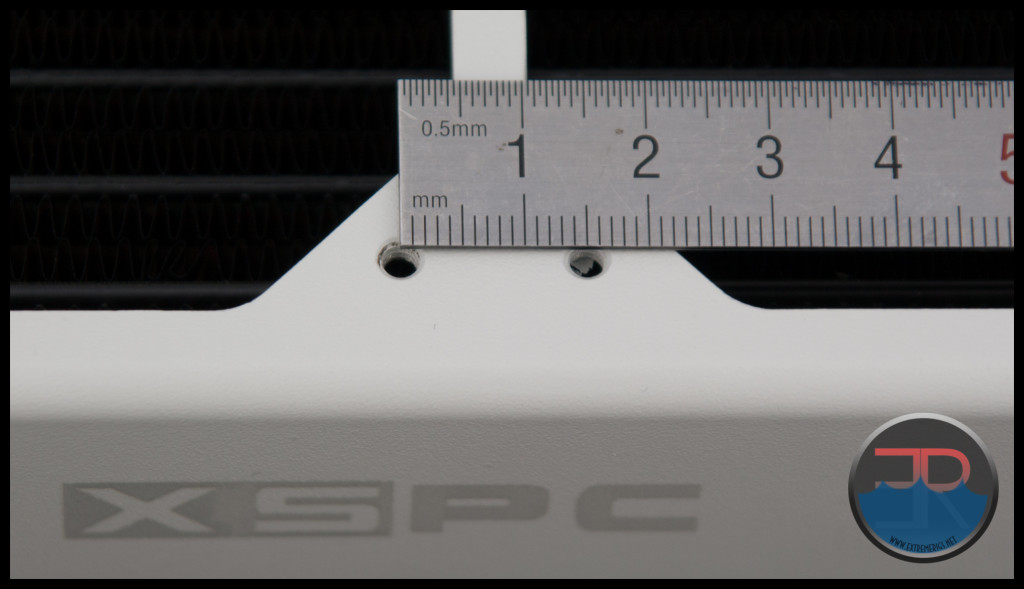

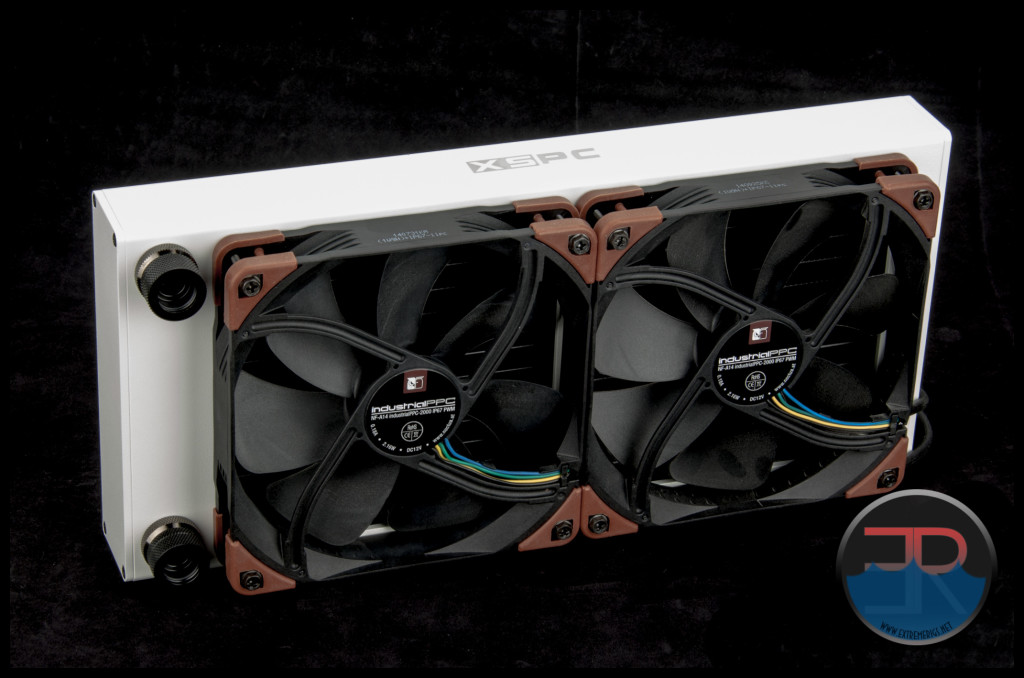 The next photo may best depict the slightly off white color of the AX280’s white finish as the white blades of the Noise Blocker eLoops are a very bright white indeed.
The next photo may best depict the slightly off white color of the AX280’s white finish as the white blades of the Noise Blocker eLoops are a very bright white indeed.
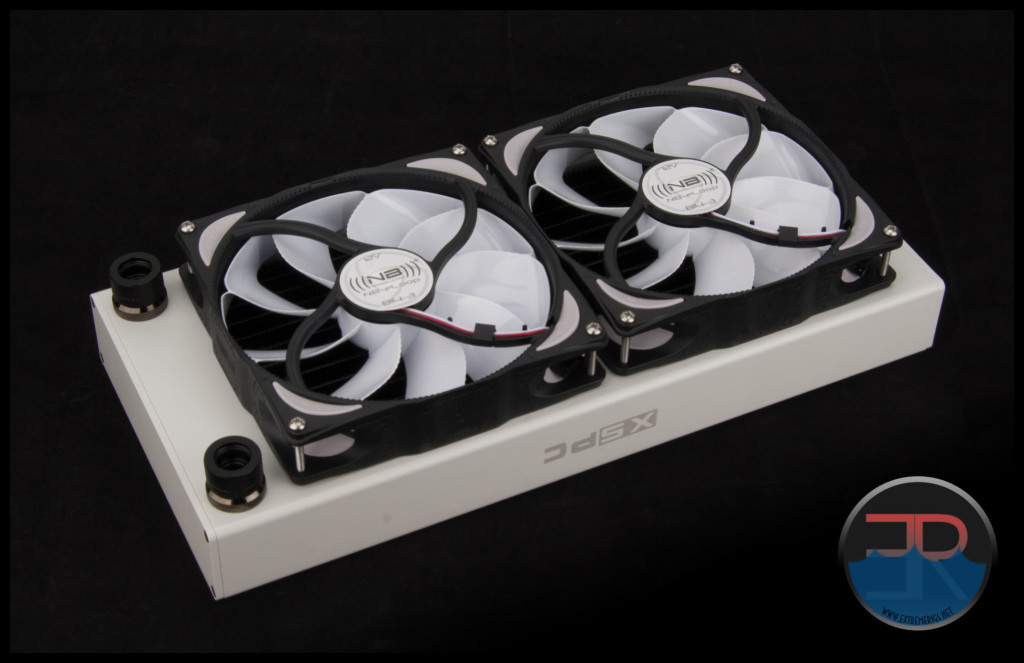
After performance testing was complete I dismantled the AX280 for an internal inspection and to show the completely disassembled unit.
 Both of the outside rows of fins are coarse louvered and single, unlike those between the tubes which are split and finely louvered.
Both of the outside rows of fins are coarse louvered and single, unlike those between the tubes which are split and finely louvered.
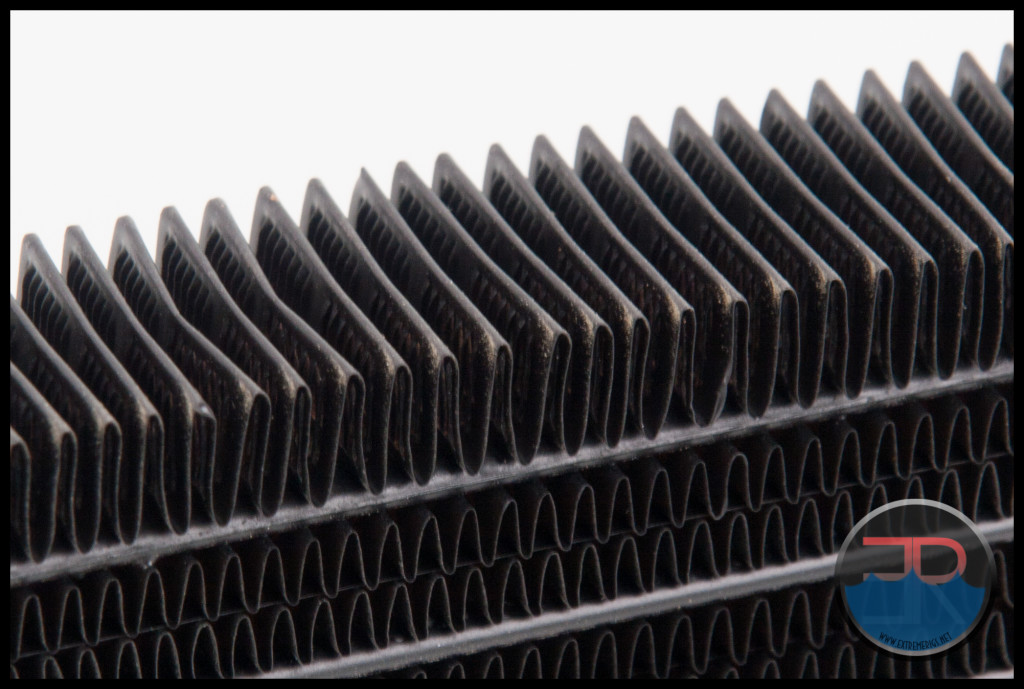
With both port extenders and the end plate removed, the radiator can be carefully slid out from it’s housing.
The ease with which the AX280 can be disassembled makes it an ideal candidate for custom paintwork of the casing panels.

Before moving on I must mention the internal cleanliness of the AX280 sample. This is not something I normally do because cleaning rads before use is just one of those chores which we all have to do.
This AX280 was by far the cleanest radiator that I have ever rinsed/flushed/shaken and I’ve done my fair share!
The AX280 wasn’t just very clean, it was exceptionally clean!
After a warm water flush and commencing my traditional shake-a-rad dance, there was virtually zero particles when emptying the distilled after the first time. the second shake and rinse was totally clean.
Whatever process was used to clean the radiator after manufacturing, it was very, very effective and left me thinking I wish all radiators were this good.
So here we have a 40mm thick radiator with a dense (ish) core that has just 2 ports and no protection plates. The build quality and finish on the sample was excellent. It has a stylish look but it is lacking a few features.
Let’s see how it performs…








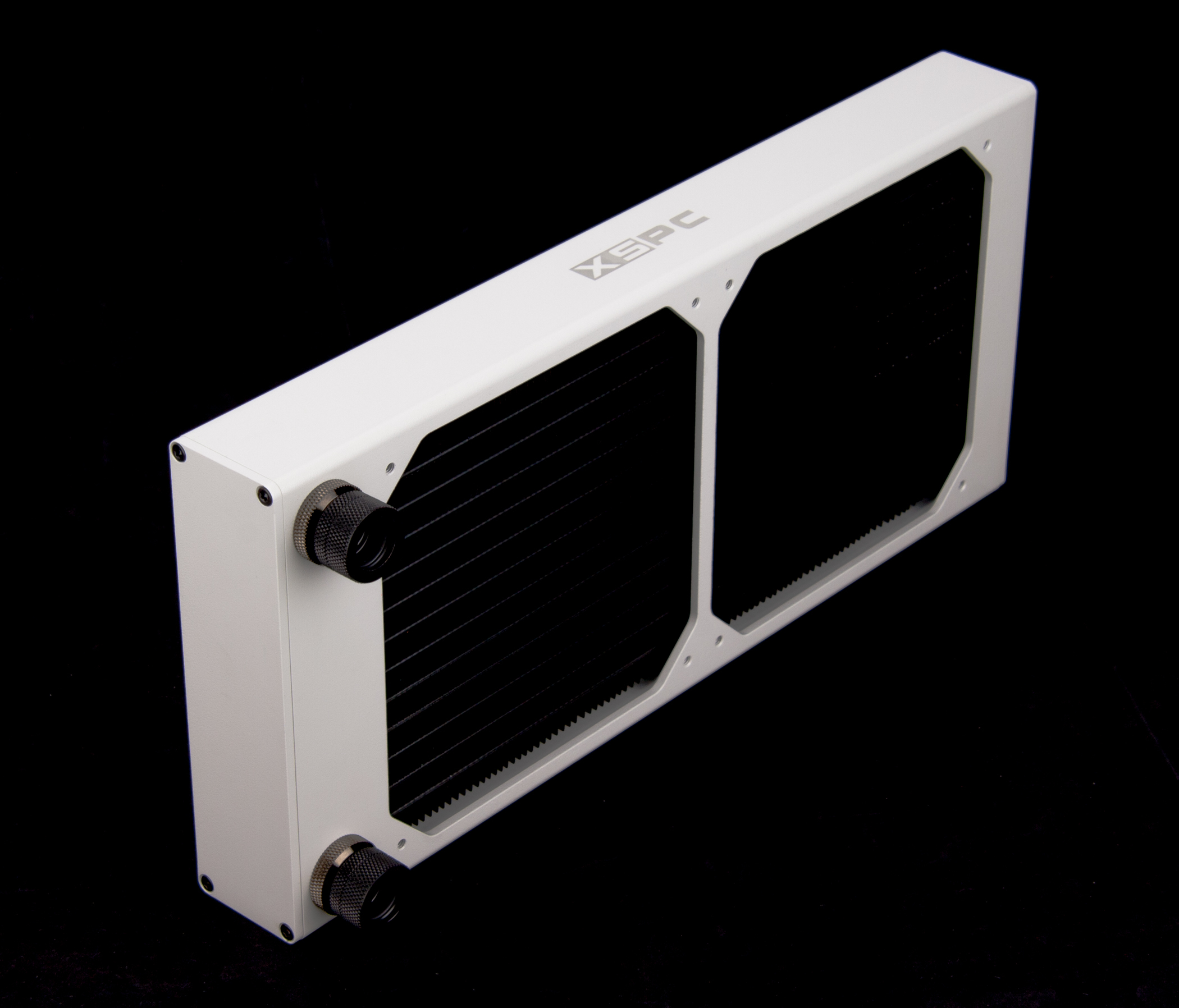


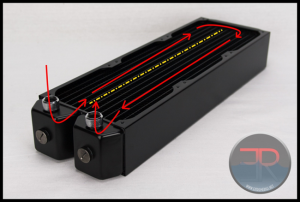
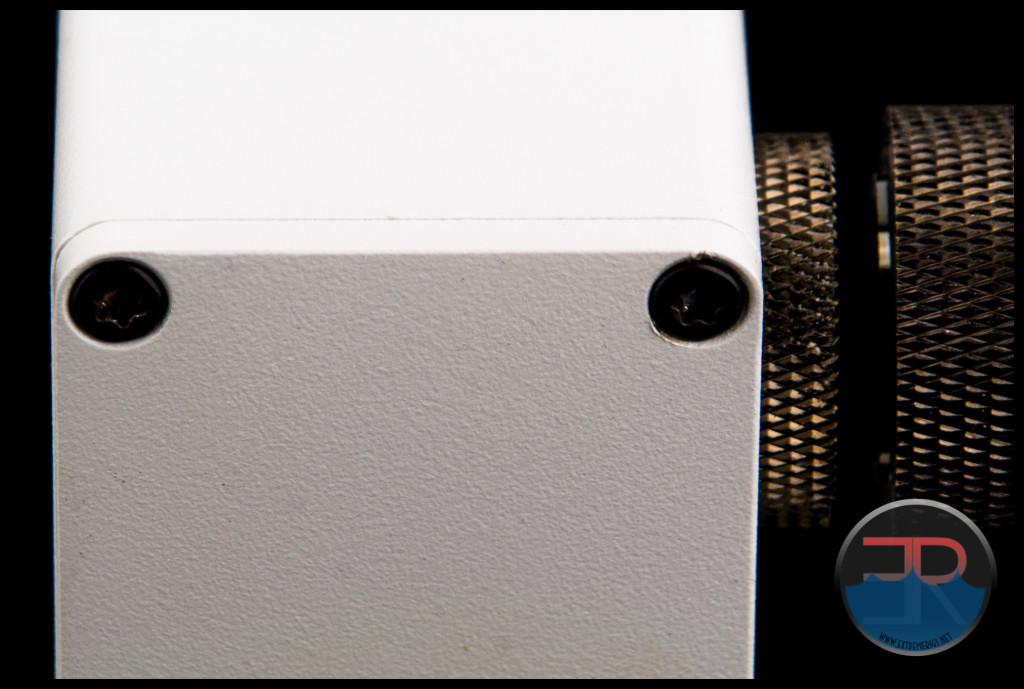





very grateful for the work you continue doing, can’t wait for the rest of the 280mm radiator review to pop up.
cheers
Thanks a ton for including all the data from your 280mm tests. I am just about to purchase a 280 radiator and have been going back and forth between the 280GTS, 280GTS X-Flow, and CE280…except using 140 and 360 tests as a basis for my decision. The data shown here has helped me tremendously. Thanks!
Glad to have been on assistance.
We included a few extra plots this time and it’s probably getting close to data saturation point for many readers.
Let us know which plots are the most and least useful to you guys.
We can try to streamline a little if the vast majority prefer less plots.
We don’t really like to use spoilers, as we consider the data either useful or not.
Really appreciate all the work you and Stren put in. I personally think the radiator efficiency space/radiator relative average performance graphs arent needed (but appreciated). People reading these reviews Im sure are capable of figuring this stuff out on their own based on the thermal tests you provide and just a little extra homework.
Hey fast_fate, you guys have become my go-to site for water cooling information. I wish I had found your site a couple of years back when I first started on this WC obsession, you would have saved me some ca$h! And while I realize the AX280 is the focus of this review, you have also made me very happy in showing just what a beast the Hardware Labs Nemesis 280GTX radiator is. I just picked this up a few months back in all-white form from Performance-PCs and am very happy to see that not only is it a class leading 280mm radiator, it actually outstrips the (non opti-flow setup) Nemesis 360GTX! And the best part is that it fits more cases than a 360mm radiator due to it’s reduced height.
Great review on the AX280. I very much like the AX series rads, and their case/shroud construction feels more robust and bomb-proof than the EK versions. But the one thing I do like about the CE and XE versions from EK is that they are “non-louvered” fins which means they will be less likely to become polluted by environmental dust. The AX series, much like the EX series being higher FPI and louvered would be a bit more sensitive to dust accumulation.
Great job and thanks!
Comments are closed.